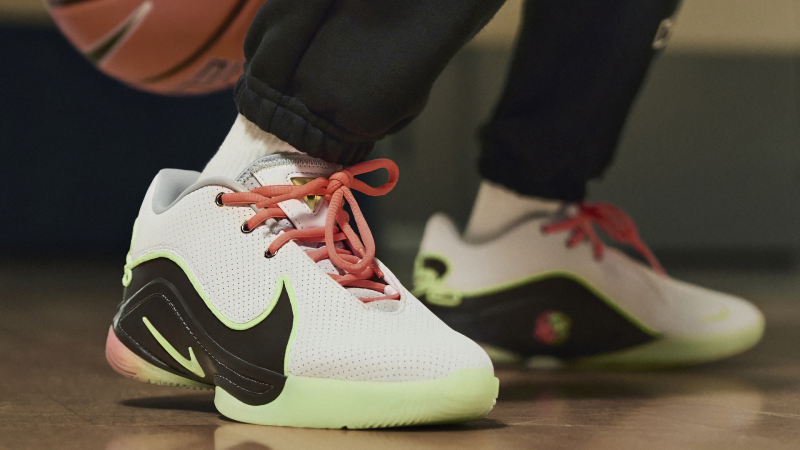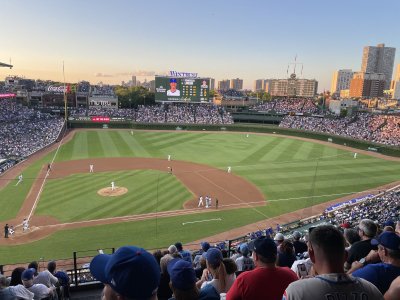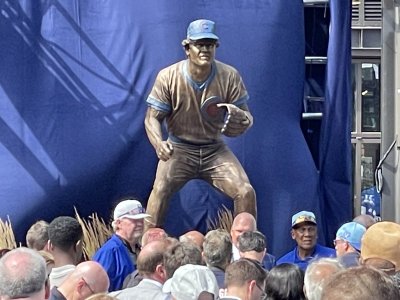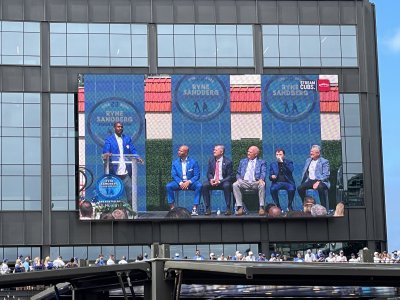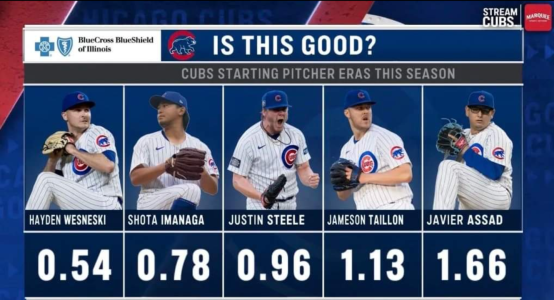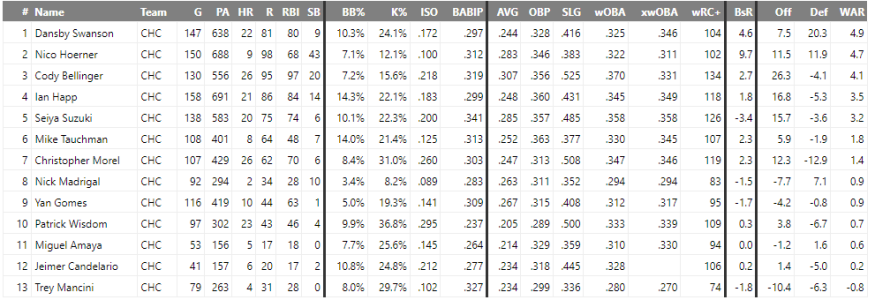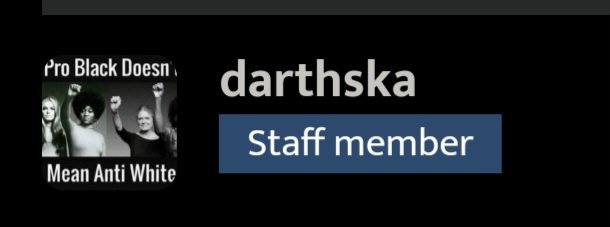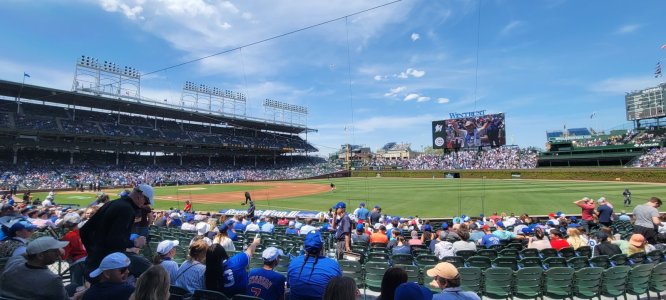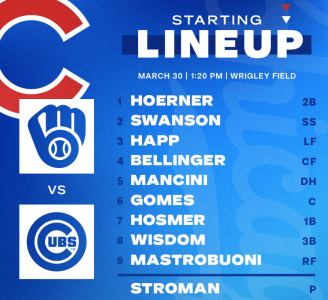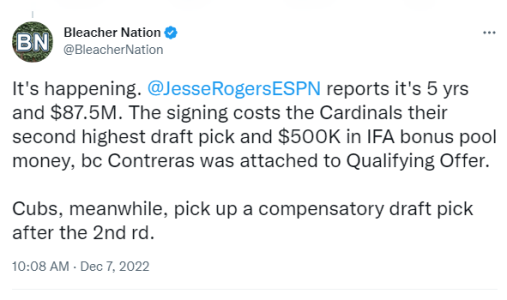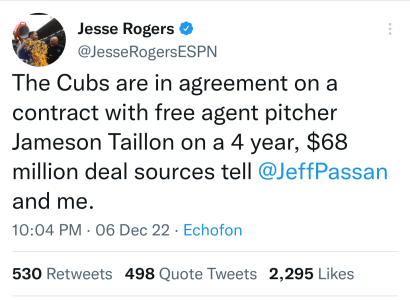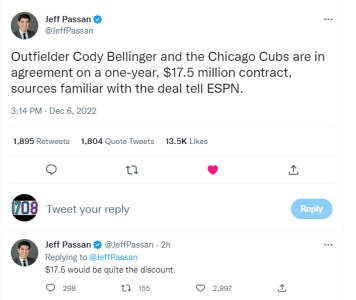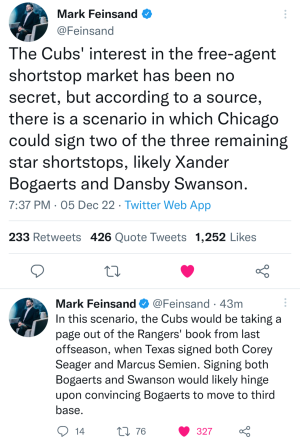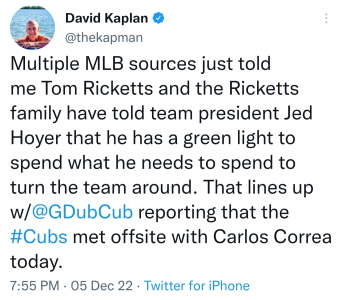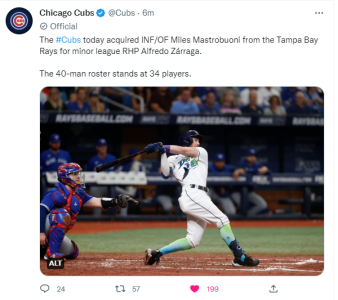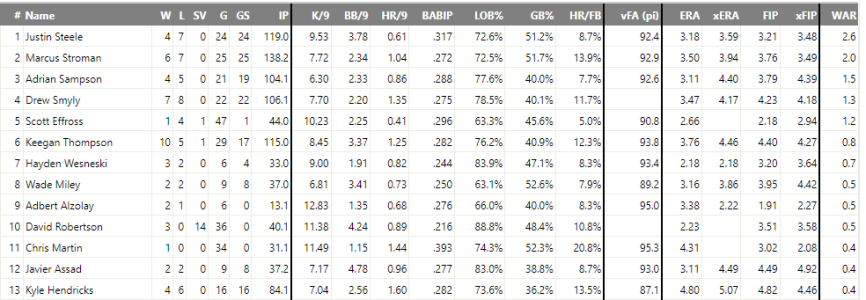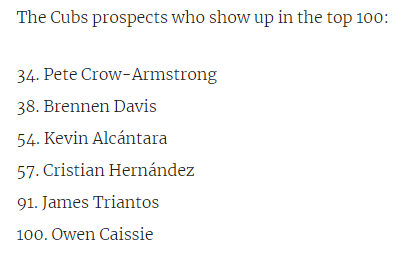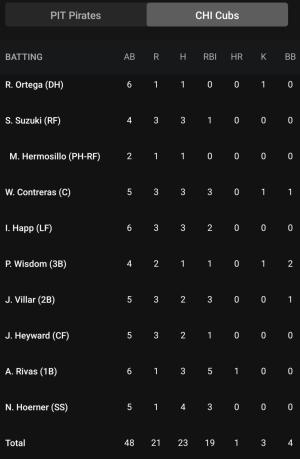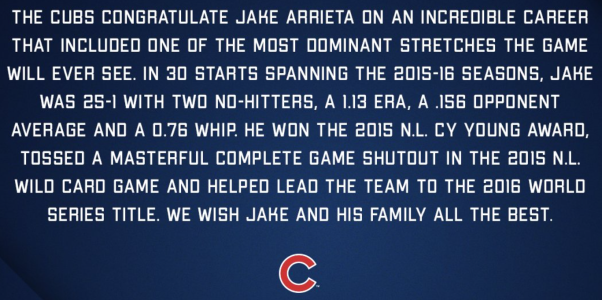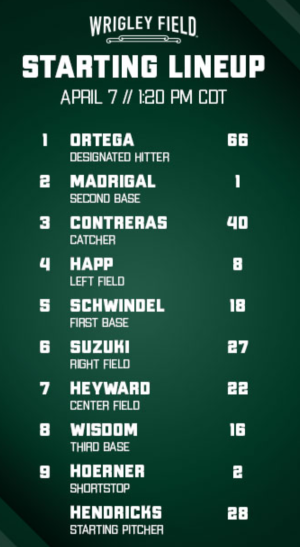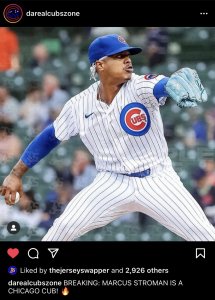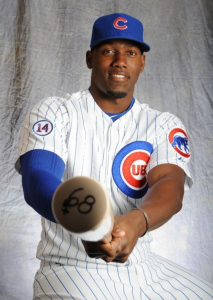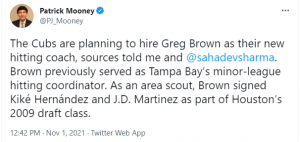Billy McKinney was surprised when the Oakland Athletics took him with the 24th overall pick in the 2013 Draft.
"Their scouts a very stealthy," the outfielder said. "I really didn't know if they were that interested."
The real shock, though, came a little over a year later.
McKinney was traded to the Chicago Cubs as part of Oakland's first blockbuster deal of the summer. Along with him went shortstop Addison Russell -- the Athletics' first-round pick the year before McKinney.
"That's what really stunned me," McKinney said. "I know how much they loved Addison."
Oakland loved McKinney's potential, too. But the Athletics are looking to win now and agreed to part with their two top prospects to land Jeff Samardzija and fellow starter Jason Hammel.
The rebuilding Cubs -- their impressive prospect list now even better -- were the beneficiaries.
Russell, the 11th overall pick in the 2012 Draft, is off to a strong start in his new organization at Double-A Tennessee. and McKinney has done the same with Daytona in the Class A Advanced Florida State League.
McKinney, who doesn't turn 20 until Aug. 23, hit a team-best .327 in his first 31 games with Daytona and had nine extra-base hits and 28 RBIs. His on-base percentage was .424 thanks to 18 walks.
"The guys here have really made it easy," McKinney said of the transition to a new organization. "I couldn't be happier to be a Cub."
As much as the left-handed hitter and thrower was looking forward to reaching the Major Leagues with Oakland, Wrigley Field is certainly a more intriguing potential destination than O.co Coliseum.
McKinney has already played inside the ivy-covered walls once. That was in the 2012 Under Armour All-American Game before his senior year at Dallas area Plano West High School.
"Everyone hopes to play in Wrigley Field," McKinney said. "It's a stadium you know about even if you're not a baseball fan."
In the talent-laden Cubs farm system, it won't necessarily be easy to get there, though.
McKinney has dropped from No. 2 on the Oakland prospect list to No. 9 with the Cubs, who have eight among MLB.com's Top 100.
"There are definitely a bunch of great players in this organization," he said.
McKinney tweaked his shoulder at the end of July diving for a ball in Daytona but missed just a few days. He was 8-for-20 with six walks in his first six games back while temporarily serving as the designated hitter.
"I'm sure I'll be back in right field soon," he said. "I'm fine -- it's just precautionary."
A rough May left McKinney hitting just .241 with Stockton of the Class A Advanced California League at the time of the trade, but his overall numbers are still solid for the season.
In 101 combined games, McKinney had 18 doubles, four triples, 11 homers, 61 RBIs and 54 walks. His on-base percentage was .424 and his slugging mark .449.
Although Russell was the big-name prospect going to the Cubs, McKinney deserves attention in his own right.
"It was an honor to be a part of a trade like that," he said. "It was surprising but very exciting, too."
Navigation
Install the app
How to install the app on iOS
Follow along with the video below to see how to install our site as a web app on your home screen.
Note: This feature may not be available in some browsers.
More options
You are using an out of date browser. It may not display this or other websites correctly.
You should upgrade or use an alternative browser.
You should upgrade or use an alternative browser.
Official 2023 Chicago Cubs Season Thread Vol: (17-17)
- Thread in 'Sports & Training' Thread starter Started by CP1708,
- Start date
Lake Shore Drive
formerly slp product
- Feb 8, 2005
- 7,336
- 2,445
I always figured Addison was the gem of that trade and thought McKinney and Straily were just fillers, but McKinney is certainly making a name for himself. It's incredible the amount of talent we're stockpiling.
Theo
Theo

- Sep 7, 2011
- 1,915
- 531
In the June 2015 draft. Theo should take the Best Player Available. Whether its a pitcher or position player. I wouldn't just draft a pitcher because we need a pitcher.
Interesting day for the Cubs yesterday.
Kris Bryant hit his 40th home run of the season, a walk off 2 run homer in the bottom of the 12th inning. He now has 103 or 104 rbi on the year (I lost track)
CJ Edwards threw 6 innings, giving up just 4 hits. He seems to be doing ok from his arm issue earlier in the year.
The Cubs traded Brett Jackson, yes, that Brett Jackson, the guy that was supposed to be our best prospect for like 3 years and completely flamed out. He has been traded to the Diamondbacks for a middle reliever.
He has been traded to the Diamondbacks for a middle reliever.
And Sportsjunkie, no doubt Theo will take the BPA next June. We can’t lose no matter what. Either we grab an extra arm with plenty of youth, or we get yet another bat to develop behind the stable of bats we already have. Either way, he won’t have to reach, or second guess, or any of that, just take the best guy on the board no matter where he slots. Could be a high school arm or bat, or a college arm or bat, either way just deepens the farm system as much of the talent starts to trickle into the majors.
Kris Bryant hit his 40th home run of the season, a walk off 2 run homer in the bottom of the 12th inning. He now has 103 or 104 rbi on the year (I lost track)
CJ Edwards threw 6 innings, giving up just 4 hits. He seems to be doing ok from his arm issue earlier in the year.
The Cubs traded Brett Jackson, yes, that Brett Jackson, the guy that was supposed to be our best prospect for like 3 years and completely flamed out.
 He has been traded to the Diamondbacks for a middle reliever.
He has been traded to the Diamondbacks for a middle reliever. And Sportsjunkie, no doubt Theo will take the BPA next June. We can’t lose no matter what. Either we grab an extra arm with plenty of youth, or we get yet another bat to develop behind the stable of bats we already have. Either way, he won’t have to reach, or second guess, or any of that, just take the best guy on the board no matter where he slots. Could be a high school arm or bat, or a college arm or bat, either way just deepens the farm system as much of the talent starts to trickle into the majors.
- Sep 7, 2011
- 1,915
- 531
Josh Vitters should be getting traded next. Brett Jackson flamed out badly. It would be great that the BPA available is a pitcher though.
- Jan 7, 2004
- 28,043
- 10,466
Best hitter is Daz Cameron, Mike Cameron's son. Pitcher is Mike Matuella, righty from Duke.In the June 2015 draft. Theo should take the Best Player Available. Whether its a pitcher or position player. I wouldn't just draft a pitcher because we need a pitcher.
Matuella
Nathan Kirby LHP from Virginia
DJ Stewart OF from Florida St
Alex Bregman SS from LSU
James Kaprelian RHP from UCLA
Kyle Funkhouser RHP from Louisville
Skye Bolt OF North Carolina
All guys that could be in play for us. Not including the High School kids, which could be anybody this time next year. But I would suspect, at this point, Theo is looking for college kids, 21-22 years old, that can be helping the team by 2016 when we figure to really be in the mix. Taking an 18 year old could be someone not ready til 2018 or later.
Said High School kid would have to be A-Rod, Andruw Jones type special for Theo to take next year I believe.
Nathan Kirby LHP from Virginia
DJ Stewart OF from Florida St
Alex Bregman SS from LSU
James Kaprelian RHP from UCLA
Kyle Funkhouser RHP from Louisville
Skye Bolt OF North Carolina
All guys that could be in play for us. Not including the High School kids, which could be anybody this time next year. But I would suspect, at this point, Theo is looking for college kids, 21-22 years old, that can be helping the team by 2016 when we figure to really be in the mix. Taking an 18 year old could be someone not ready til 2018 or later.
Said High School kid would have to be A-Rod, Andruw Jones type special for Theo to take next year I believe.
- Jan 7, 2004
- 28,043
- 10,466
Don't forget Bren Rodgers, since you mentioned Bregman. Good footwork and bat speed.Matuella
Nathan Kirby LHP from Virginia
DJ Stewart OF from Florida St
Alex Bregman SS from LSU
James Kaprelian RHP from UCLA
Kyle Funkhouser RHP from Louisville
Skye Bolt OF North Carolina
All guys that could be in play for us. Not including the High School kids, which could be anybody this time next year. But I would suspect, at this point, Theo is looking for college kids, 21-22 years old, that can be helping the team by 2016 when we figure to really be in the mix. Taking an 18 year old could be someone not ready til 2018 or later.
Said High School kid would have to be A-Rod, Andruw Jones type special for Theo to take next year I believe.
While there remains a chance that the Cubs will continue dealing in August, it’s likely that the bulk of their 2014 in-season trading is behind them. While we spend the bulk of our time, understandably, analyzing the player comings and goings in the deals, there is another layer to consider: the money.
With a “closed system” that directs all revenues, after paying expenses, to the baseball operations department, every dollar the Chicago Cubs save in trade from a given year’s baseball budget can be used thereafter (confirmed, in part, by the front office with respect to the money not spent on Masahiro Tanaka in 2014 rolling over into 2015). Until the most significant revenue increases kick in over the next five years, even modest sums of money (in baseball terms) can really matter.
So, against that backdrop, let’s take a look at how much money the Cubs have saved this year in trades, and also look at how those deals impact the projected spending for 2015. Here are the players traded, the amount they were owed this year, and the amount the Cubs saved in the trades:
Jose Veras ($4 million) – The Cubs did not trade Veras, instead releasing him earlier this year. The Astros picked him up on a minor league deal, calling him up in late June. They’ll pay a prorated portion of the Major League minimum for Veras the rest of the way, so the Cubs save about $250,000.
Jeff Samardzija ($5.345 million) – The Samardzija/Hammel deal went down with just about half of the season left, so the savings to the Cubs here are pretty simple division. The Cubs save about $2.673 million.
Jason Hammel ($6 million, plus $1 million in incentives) – Hammel was very likely to reach his incentives, on which we’ll assume the Cubs save a proportionate amount. Splitting that $7 million, and the Cubs save about $3.5 million.
Darwin Barney ($2.3 million) – Although Barney had about $800,000 left on his contract when he was traded, the Cubs chipped in about $300,000. So, the Cubs save about $500,000.
Emilio Bonifacio ($2.5 million, plus up to $425,000 in incentives) – Bonifacio was likely to reach some of his incentives, which we’ll peg at $200,000 (to be conservative), and on which we’ll assume the Cubs save a proportionate amount. That leaves about $900,000 owed to Bonifacio from the date of the trade through the end of the year. The Cubs chipped in $1 million on the Bonifacio/Russell trade, so let’s wait for the total after Russell.
James Russell ($1.775 million) – Russell was owed about $590,000 the rest of the way when he was traded, so, adding that to Bonifacio’s $900,000, and then subtracting the $1 million the Cubs sent to the Braves, and the Cubs save about $490,000.
On some of those lesser amounts, keep in mind that the players’ spots were taken up by new guys on the roster, making the minimum, as well as 40-man additions like Dan Straily, Felix Doubront, and Jacob Turner. Taken together, you can probably lop off about $1 million from the savings.
So, the total savings to the Cubs this year in trades: About $6,413,000, give or take an incentive here or there.
Keep in mind, that’s the amount of money the Cubs now theoretically have available to spend in 2015 above and beyond what the budget would otherwise call for, and above and beyond whatever money has already been rolled over.
Further, having traded away Jeff Samardzija, Darwin Barney, and James Russell, the “arbitration raises” calculation changes for 2015. Even if you were expecting a non-tender for Barney and/or Russell, there’s still a significant drop in projected 2015 payroll from Samardzija, alone, who was set to make as much as $9 to 10 million in his final trip through arbitration.
Stripping away all three guys from the 2015 roster (but then adjusting upwards for guys who have emerged as probable 2015 tenders (Ruggiano/Coghlan types), and for guys who are likely now to make a whole lot more than it looked at the start of the year (Arrieta, for example)), you’re still left with a ballpark estimate of $50 to $55 million in projected 2015 payroll, depending on non-tenders, and incorporating generous arbitration raises.*
That means, even forgetting about any Tanaka-related rolled over funds, and even assuming the Cubs do not increase payroll from the current $90ish million range this year (which puts them in the bottom 1/3 of the league, and includes payments to guys not even on the roster), the Cubs will have $35 to $40 million to spend this offseason on payroll PLUS the $6.4 million we just tallied above.
Think this front office might be able to do some things with $40 to $45 million to spend in 2015 payroll commitments? And what if payroll increases slightly to a still-below-league-average $100 million? What if they spend the $20+ million in rolled over Tanaka funds? And what if they backload contracts (because that’s just smart business, and because it will align with revenues coming)?
The Cubs can do a whole lot this offseason if they want, and without dramatically increasing payroll.
Theo

Kris Bryant with a bruise on his foot. Should be cautious with him.
Arriete 7 shutout innings, 9 K's.
Starlin 2 hits including the opposite field game winning homer in the 9th.
Baez first 2 walks of his career. (Learning to take pitches)
Starlin-Baez turn a tremendous double play.
Alcantara a diving grab in Center.
Arriete 7 shutout innings, 9 K's.
Starlin 2 hits including the opposite field game winning homer in the 9th.
Baez first 2 walks of his career. (Learning to take pitches)
Starlin-Baez turn a tremendous double play.
Alcantara a diving grab in Center.
- Sep 7, 2011
- 1,915
- 531
Matuella
Nathan Kirby LHP from Virginia
DJ Stewart OF from Florida St
Alex Bregman SS from LSU
James Kaprelian RHP from UCLA
Kyle Funkhouser RHP from Louisville
Skye Bolt OF North Carolina
All guys that could be in play for us. Not including the High School kids, which could be anybody this time next year. But I would suspect, at this point, Theo is looking for college kids, 21-22 years old, that can be helping the team by 2016 when we figure to really be in the mix. Taking an 18 year old could be someone not ready til 2018 or later.
Said High School kid would have to be A-Rod, Andruw Jones type special for Theo to take next year I believe.
I need to check these young kids out.
- Sep 7, 2011
- 1,915
- 531
Best hitter is Daz Cameron, Mike Cameron's son. Pitcher is Mike Matuella, righty from Duke.
i have heard of Daz before but never seen him play. i will check him out and go from there.
Lake Shore Drive
formerly slp product
- Feb 8, 2005
- 7,336
- 2,445
Castro!!!
Rizzo the go ahead homer in the 8th.
Javier Baez a MONSTER shot in the 9th.
Kyle Hendricks, AGAIN, 7 innings, 1 run, ERA now at 1.66

Neil Ramirez, all year long, ERA 1.17, 2 K's in 3 batters.
Castro has hit in 16 of his last 17 games.
Russell, Schwarber, Soler, Almora all had nice weekends with multiple hits.
Javier Baez a MONSTER shot in the 9th.
Kyle Hendricks, AGAIN, 7 innings, 1 run, ERA now at 1.66


Neil Ramirez, all year long, ERA 1.17, 2 K's in 3 batters.
Castro has hit in 16 of his last 17 games.
Russell, Schwarber, Soler, Almora all had nice weekends with multiple hits.

Baseball Reference @baseball_ref 2m
Javier Baez has joined Jason Kipnis as the only players in the last 100 years to hit 5+ HR as a 2B in their 1st 14 career games
Baseball Reference @baseball_ref 31m
Anthony Rizzo now has 4 go-ahead HR in the 7th inning or later this season (most in MLB). It's most by Cub since Soriano (5) in 2009
Last edited:
Lake Shore Drive
formerly slp product
- Feb 8, 2005
- 7,336
- 2,445
Yeah I'm really liking Hendricks and Wada.
Castro been red hot lately
Can't wait to see if Bosio can salvage Turner.
Castro been red hot lately

Can't wait to see if Bosio can salvage Turner.
arstyle27
Supporter
- Nov 13, 2001
- 10,607
- 3,607
Baez bomb
- Jan 7, 2004
- 28,043
- 10,466
Obvious pedigree. To go with speed, defense, and quality at-bats.i have heard of Daz before but never seen him play. i will check him out and go from there.
- Sep 7, 2011
- 1,915
- 531
Obvious pedigree. To go with speed, defense, and quality at-bats.
I bet his speed will be a problem for the opposing team.
Lake Shore Drive
formerly slp product
- Feb 8, 2005
- 7,336
- 2,445
^
Repped
Repped

At least gimme a rep if you're gonna swipe gifs from the thread chief
Man, I've given you more reps than anybody on this board.
 I even tell the others to give you reps.
I even tell the others to give you reps. But this time, I saw those first, yesterday when I read the article. I just didn't have time to post them yesterday.

